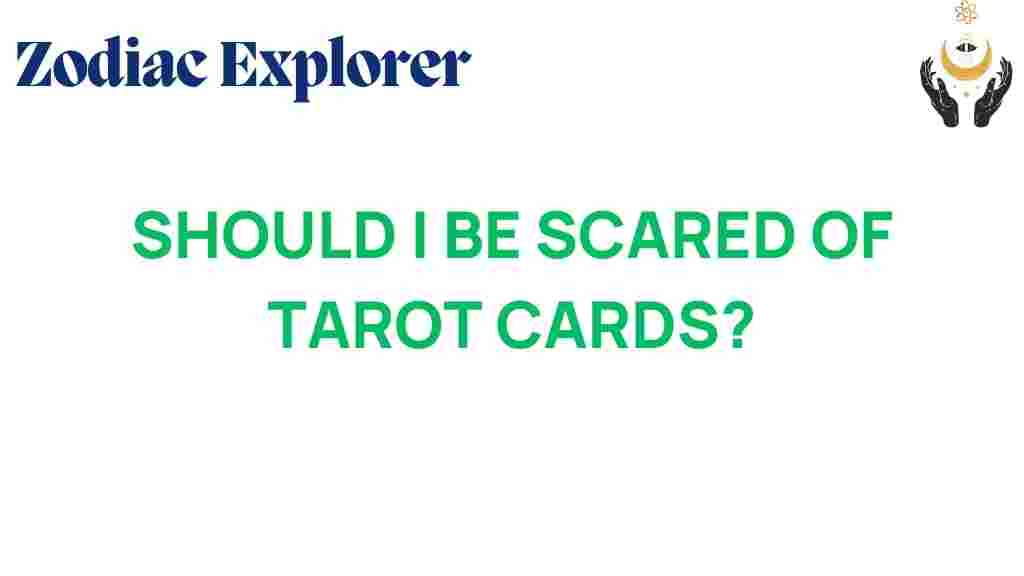Unveiling the Mystique: Should You Fear Tarot Cards?
Tarot cards have long been enveloped in an air of mysticism, often associated with fortune telling and spiritual guidance. Many people are intrigued by the insights that tarot reading can provide, while others harbor fears and misconceptions about this ancient form of divination. In this article, we delve into the world of tarot cards, exploring their meanings, the beliefs surrounding them, and whether you should truly fear what they represent.
Understanding Tarot Cards
At its core, tarot cards are a tool for divination, offering personal insight into one’s life and circumstances. A typical tarot deck consists of 78 cards, divided into the Major and Minor Arcana. Each card holds a unique meaning and symbolism that can guide individuals in their personal journeys.
The History of Tarot Cards
Tarot cards originated in the 15th century and were initially used for playing games. It wasn’t until the 18th century that they became associated with mysticism and the occult. Over the years, various interpretations and uses of tarot cards have emerged, leading to the diverse practices we see today.
Common Misconceptions About Tarot Reading
Many people hold misconceptions about tarot cards and the art of tarot reading. Here are some prevalent beliefs:
- Tarot is evil: Some believe that using tarot cards opens portals to dark forces, which is a significant misconception.
- Tarot predicts the future: While tarot can provide insights, it does not definitively predict the future.
- Only psychics can read tarot: Anyone can learn to read tarot cards with practice and study.
Benefits of Tarot Reading
Despite the fears and misconceptions, tarot reading can offer numerous benefits:
- Personal Insight: Tarot cards can help individuals gain clarity about their situations, relationships, and decisions.
- Spiritual Guidance: Many use tarot as a tool for spiritual growth, helping them connect with their higher selves.
- Reflection: The process of reading tarot encourages reflection and introspection, fostering personal development.
How Tarot Reading Works
Understanding how a tarot reading works can demystify the process and alleviate fears. Here’s a step-by-step guide to a typical tarot reading:
- Set Your Intention: Before starting, it’s crucial to have a clear question or intention in mind.
- Shuffle the Cards: While shuffling, focus on your question, allowing your energy to infuse the deck.
- Draw the Cards: The reader will draw a specific number of cards, usually three to ten, depending on the spread being used.
- Interpret the Cards: Each card position has a meaning, and the reader will interpret the cards based on their positions and the question posed.
- Reflect on the Reading: After the reading, take time to reflect on the insights gained and how they apply to your life.
Is There a Need to Fear Tarot Cards?
The fear surrounding tarot cards often stems from misunderstandings and cultural beliefs. Here are a few points to consider:
- Intention Matters: Tarot cards are a tool; their impact depends on how they are used.
- Empowerment: Many people find empowerment through tarot readings, gaining confidence in their decision-making.
- Self-Discovery: Tarot can serve as a mirror, reflecting your inner thoughts and feelings.
Addressing Common Fears
Here are some common fears regarding tarot reading and practical tips to address them:
- Fear of Negative Outcomes: Remember that tarot’s purpose is not to predict doom but rather to guide you in making informed choices.
- Fear of Opening Spiritual Portals: Set clear boundaries and intentions before a reading to maintain control over your experience.
- Fear of Judgment: A good tarot reader will provide a safe, non-judgmental space for you to explore your questions.
Finding a Reliable Tarot Reader
If you’re considering a tarot reading, it’s essential to find a reader who resonates with you. Here are some tips:
- Research: Look for reviews and testimonials from previous clients.
- Alignment: Choose a reader whose style and approach align with your beliefs and comfort level.
- Consultation: Some readers offer a free consultation to discuss your needs and their methods.
For those interested in exploring tarot further, you can visit this resource for more information on tarot techniques and learning materials.
Conclusion: Embracing or Avoiding Tarot Cards?
Ultimately, whether or not to fear tarot cards depends on your beliefs and experiences. While some may view tarot as a mystical tool for fortune telling, others see it as a means of gaining personal insight and spiritual guidance. By overcoming misconceptions and understanding the true nature of tarot reading, you can make an informed decision about your relationship with this ancient practice.
In summary, tarot cards can serve as a valuable resource for self-discovery and empowerment, helping individuals navigate their life’s journey. If you approach them with an open mind and a clear intention, you may find that tarot cards hold more promise than fear. Explore the world of tarot, and you might uncover insights that enrich your life.
For more insights on spiritual practices and beliefs, check out this article on the role of divination in modern spirituality.
This article is in the category Myths and created by ZodiacExplorer Team
